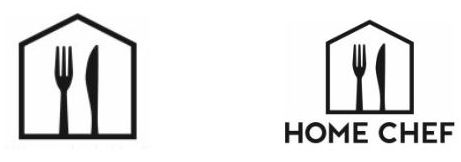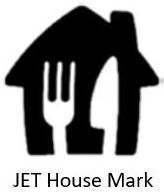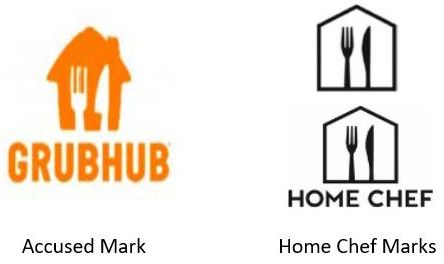The U.S. Court of Appeals for the Seventh Circuit delivered an early victory to Grubhub Inc. and Takeaway.com Central Core V.B. ("Grubhub") by denying Relish Labs LLC's and The Kroger Co.'s ("Home Chef") request for a preliminary injunction against Grubhub's alleged trademark infringement. Although Home Chef convinced a magistrate judge it was likely to succeed on the merits, the district court disagreed and rejected the magistrate's recommendation. The Seventh Circuit affirmed, holding that the district court did not abuse its discretion in finding that Home Chef was unlikely to prove infringement, despite acknowledging that Home Chef was entitled to a presumption of irreparable harm under the Trademark Modernization Act, 15 U.S.C. § 1116(a).
Background
Home Chef delivers meal kits with pre-portioned ingredients as well as heat-and-eat and ready-to-eat meals. Since 2014, Home Chef has used the following logos (the "Home Chef Marks") with its products and services:

Grubhub is an online food-ordering and delivery marketplace. In 2021, Just Eat Takeaway.com ("JET") acquired Grubhub. JET owns food-delivery brands worldwide and combines its trademark (depicted below) with local brand names in various countries:

After acquiring Grubhub, JET adopted the following logos for Grubhub and Grubhub's subsidiary, Seamless, another food delivery service:

Home Chef demanded that Grubhub stop using these logos and any form of the JET House Mark. This demand spurred Grubhub to seek a declaratory judgment that its Grubhub House Logo did not infringe the Home Chef Marks. Home Chef responded by filing counterclaims for trademark infringement on forward and reverse confusion theories. Forward confusion occurs when consumers mistakenly believe a junior user's products or services are from the same source or affiliated with the senior user. Reverse confusion, however, occurs when a large junior user saturates the market with a trademark similar to a smaller senior user, causing consumers to mistakenly believe that the products or services of the senior user are actually those of the junior user.
Home Chef then moved for a preliminary injunction prohibiting Grubhub from using its logo while the case was pending. The magistrate judge recommended granting the injunction. The district court, however, rejected the magistrate's recommendation and denied the injunction. Home Chef appealed to the Seventh Circuit.
In the Seventh Circuit, a party seeking a preliminary injunction must show (1) it is likely to succeed on the merits of its claims and (2) traditional legal remedies are inadequate such that it would suffer irreparable harm without immediate injunctive relief. Because a trademark owner is now statutorily entitled to a rebuttable presumption of irreparable harm after establishing a likelihood of success on its trademark claims, 15 U.S.C. § 1116(a), the Court focused its analysis on the merits of the alleged infringement.
The Accused Mark
Before addressing the merits, the Court first answered a fundamental question: which of Grubhub's marks was the "accused mark" for purposes of infringement. Home Chef argued that the Court should focus on the JET House Mark. But the Court held that the Grubhub House Logo was the "accused mark" because Grubhub had never used the JET House Mark in the United States without GRUBHUB, including on its website and mobile app. The Court thus compared the marks below for likelihood of confusion:

Likelihood of Confusion
On the merits, the Seventh Circuit quickly dispensed with forward confusion. The Court held that Home Chef did not make a "particularly strong" showing that it would prevail because the Court could not see how consumers seeing the Grubhub House Logo could reasonably believe they were engaging with Home Chef where the accused mark prominently featured the GRUBHUB brand name.
Turning to reverse confusion, the Court addressed four of the seven likelihood of confusion factors: (1) similarity of the marks; (2) actual confusion; (3) intent and (4) strength of the marks.
1. Similarity of the Marks
In assessing similarity, the Seventh Circuit explained that it must compare how marks appear in the marketplace and not merely side-by-side. It disagreed with Home Chef that the district court had done the latter, finding the district court examined how consumers would consider the marks "as a whole." The Seventh Circuit noted the district court's determination that, because the Grubhub House Logo combined the house design with the strong GRUBHUB word mark, GRUBHUB became the more salient portion of the logo, differentiating it from the Home Chef Marks. Although the Court acknowledged that a house mark might not always alleviate reverse confusion, it clarified this mainly occurs where marks are "virtually identical." Holding that the marks were not virtually identical, the Seventh Circuit found no clear error in the finding that this factor favored Grubhub.
Moreover, the Seventh Circuit rejected Home Chef's argument that the district court failed to give substantial weight to a rejection issued by the United States Patent and Trademark Office ("USPTO") refusing to register the JET House Mark on the ground that it was confusingly similar to Home Chef's marks. Because the finding was merely preliminary and JET had withdrawn its application—and the application did not concern the Grubhub House Logo—the Court found no clear error.
2. Strength of Marks
In a reverse confusion case, courts consider the strength of the junior user's mark to overpower the senior user's mark. Looking at the relative strength of the marks, the Court found that, although Grubhub was not a weak junior user—it had invested millions in its Grubhub House Logo and had reached $1.8 billion in sales—Home Chef was no small player, having reached $1 billion in annual sales. Given the relative parity between Grubhub and Home Chef, the Court observed it was hard to see how the Home Chef Marks were at risk of being so overwhelmed by Grubhub. Thus, the Court found no clear error on this factor either.
3. Actual Confusion
The Court assessed two instances of actual confusion and Grubhub's reverse confusion survey. First, the Seventh Circuit considered an anonymous tweet featuring the parties' mobile app icons side-by-side that read: "So uh why did grubhub make their app icon look like a stylized orange version of home chef..? Even the utensils are almost exactly the same.." It found this evidence carried little, if any, weight because the tweet did not show the author was actually confused as the author recognized the parties were distinct.
Next, the Seventh Circuit reviewed a Facebook message to Home Chef from a customer asking: "Did you and Grub Hub merge or come to some sort of mutual deal, because I had to take a double take today when my Grub Hub app updated." The Court accorded little weight to this message because it represented just one of millions of customers who would have been exposed to Grubhub's logo, making it de minimis. It also noted that a customer inquiry was "markedly different" from an actual purchase. Accordingly, the Court held that these instances did not demonstrate actual confusion.
The Court also looked to Grubhub's reverse confusion survey, which showed images of the Home Chef Marks on Home Chef's website and mobile app and asked respondents: (1) what company offered the app/service shown, and (2) whether the app/service was affiliated, sponsored, or approved by another company, and if so, which company. Because no respondents had identified Grubhub, the Court found Home Chef failed to show actual confusion. The Seventh Circuit dismissed Home Chef's argument that the district court had improperly drawn an adverse inference against it because Home Chef did not present survey evidence, finding the lower court had merely weighed the parties' evidence.
4. Intent
Finally, the Court noted that intent is largely irrelevant for reverse confusion because the junior user is not attempting to capitalize on the senior user's good will and reputation, unless the junior user deliberately disregarded the known rights of the senior user or intended to push the senior user out of the market. Here, the Court saw no evidence that Grubhub had adopted the Grubhub House Logo with any deliberate disregard for the Home Chef Marks. And although the USPTO's refusal put Grubhub on notice of Home Chef's rights, the Court held that Grubhub did not disregard those rights because Grubhub had used the JET House Mark with the GRUBHUB brand name "in an attempt to strike a balance between the two parties' commercial interests."
Weighing the Factors
The Seventh Circuit concluded that, in weighing the factors, the district court did not clearly err in finding that Home Chef was unlikely to prove likelihood of confusion and affirmed the denial of a preliminary injunction.
The case is Grubhub Inc. v. Relish Labs LLC, 80 F.4th 835 (7th Cir. 2023).
The content of this article is intended to provide a general guide to the subject matter. Specialist advice should be sought about your specific circumstances.





